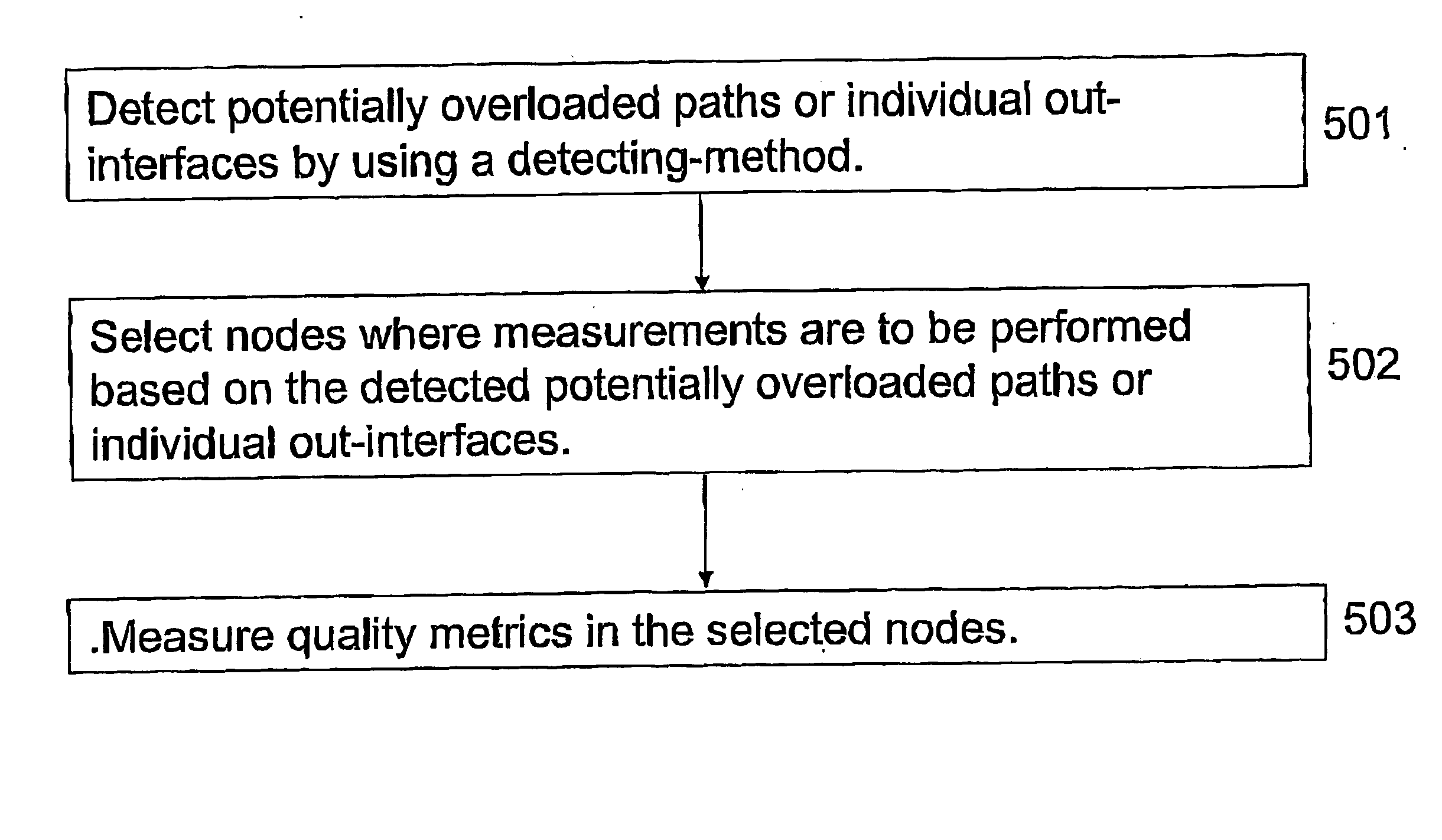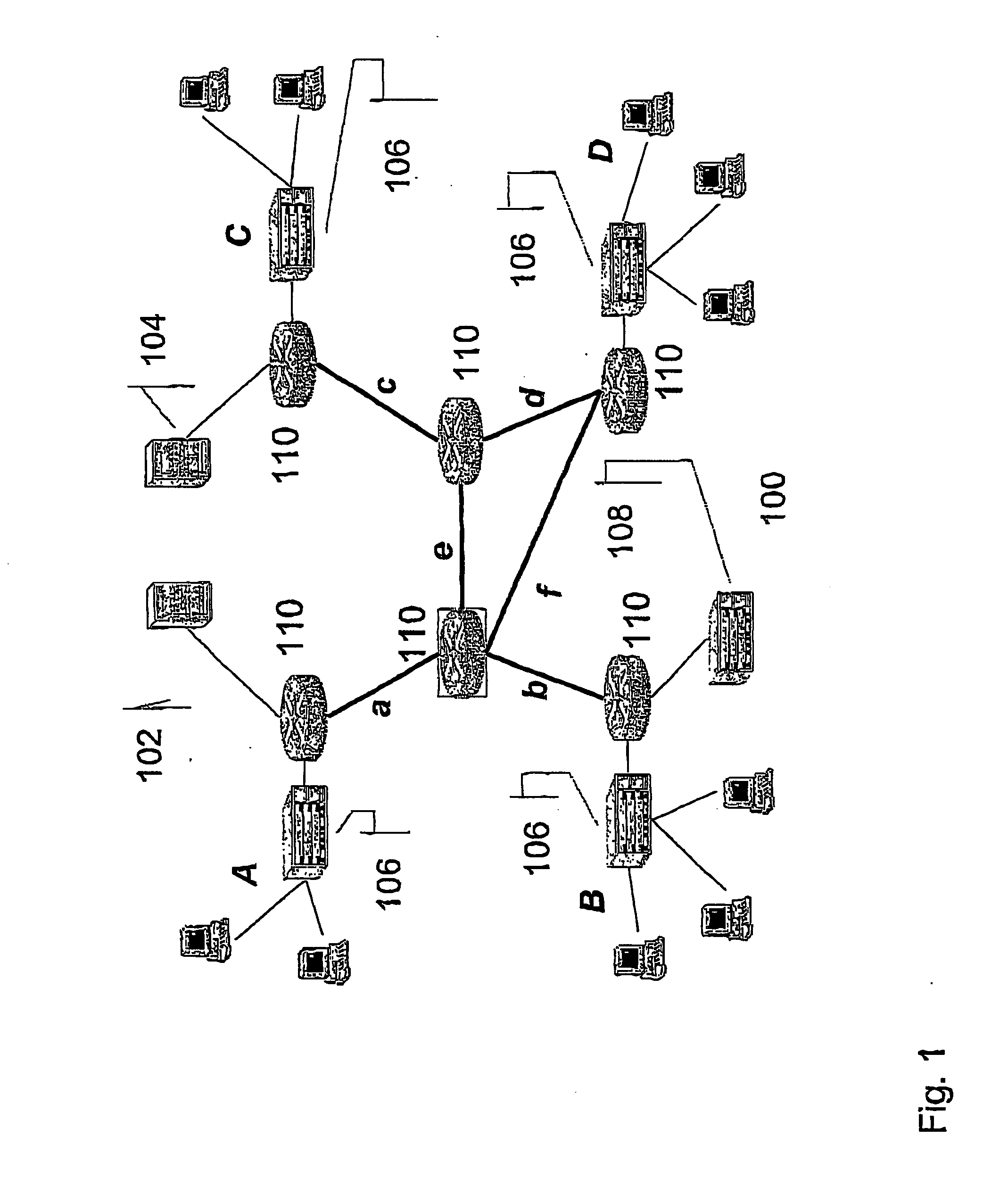Method and node for controlling the forwarding quality in a data network
a data network and quality control technology, applied in data switching networks, instruments, frequency-division multiplexes, etc., can solve the problems of inability to prove probability, inability to predict the probability, and high cost of over-provisioning, so as to improve the predictability of statistical assurance and reduce the utilization of the network
- Summary
- Abstract
- Description
- Claims
- Application Information
AI Technical Summary
Benefits of technology
Problems solved by technology
Method used
Image
Examples
first embodiment
[0072] The node QoS measurements may be initiated either by the NRM or the measurement manager independent of which one that is the master manager. Also, as for the arrangement and method for detecting a potential overload which is further described below, information transfers between the master manager and the slave manager may be initiated in three different ways i.e., scheduled in time or initiated periodically, explicitly requested, and triggered by specific events. The information comprises information of measurement results from the measurement manager to the NRM and information about potentially overloaded interface to the measurement manager from the NRM.
[0073] The node QoS measurements may be very detailed e.g. to be sufficient for a risk analyze necessary to support statistically guaranteed upper bounds on loss and / or delay. They may also be less detailed e.g. to support a feedback based admission control system, or to adjust shaping actions at network ingresses as part ...
second embodiment
[0084] The method and arrangement for detecting potential overload may also be achieved according to the present invention by using knowledge of booking levels per out-interface and knowledge of the allocated capacity for the respective interface. That implies that no E2E measurements are required.
third embodiment
[0085] The method and arrangement for detecting potential overload may also be achieved according to the present invention by measuring on the incoming traffic to a network and determine over which interface different aggregate of traffic will be transported by using knowledge of the topology and look at the destination prefix of the IP packets. Based on that, it is possible to estimate the load over each out-interface in order to identify potentially overloaded interfaces. It is however provided that the allocated capacity over the respective out-interface is known. That implies that measurements in all ingress nodes of the network, wherein the potentially overloaded out-interfaces are to be detected, are required.
[0086] Thus, the method according to the present invention controls the forwarding quality in a data network. The data network comprises a measurement manager comprising means for detecting path loads in said data network and a Network Resource Manager, NRM, comprising me...
PUM
 Login to View More
Login to View More Abstract
Description
Claims
Application Information
 Login to View More
Login to View More - R&D
- Intellectual Property
- Life Sciences
- Materials
- Tech Scout
- Unparalleled Data Quality
- Higher Quality Content
- 60% Fewer Hallucinations
Browse by: Latest US Patents, China's latest patents, Technical Efficacy Thesaurus, Application Domain, Technology Topic, Popular Technical Reports.
© 2025 PatSnap. All rights reserved.Legal|Privacy policy|Modern Slavery Act Transparency Statement|Sitemap|About US| Contact US: help@patsnap.com



